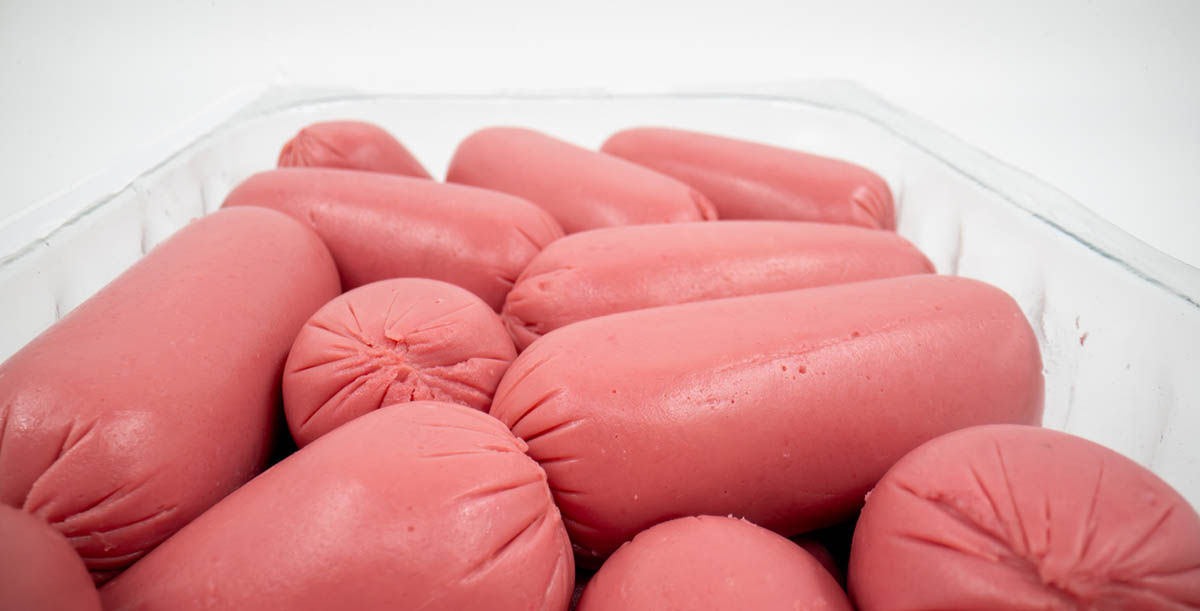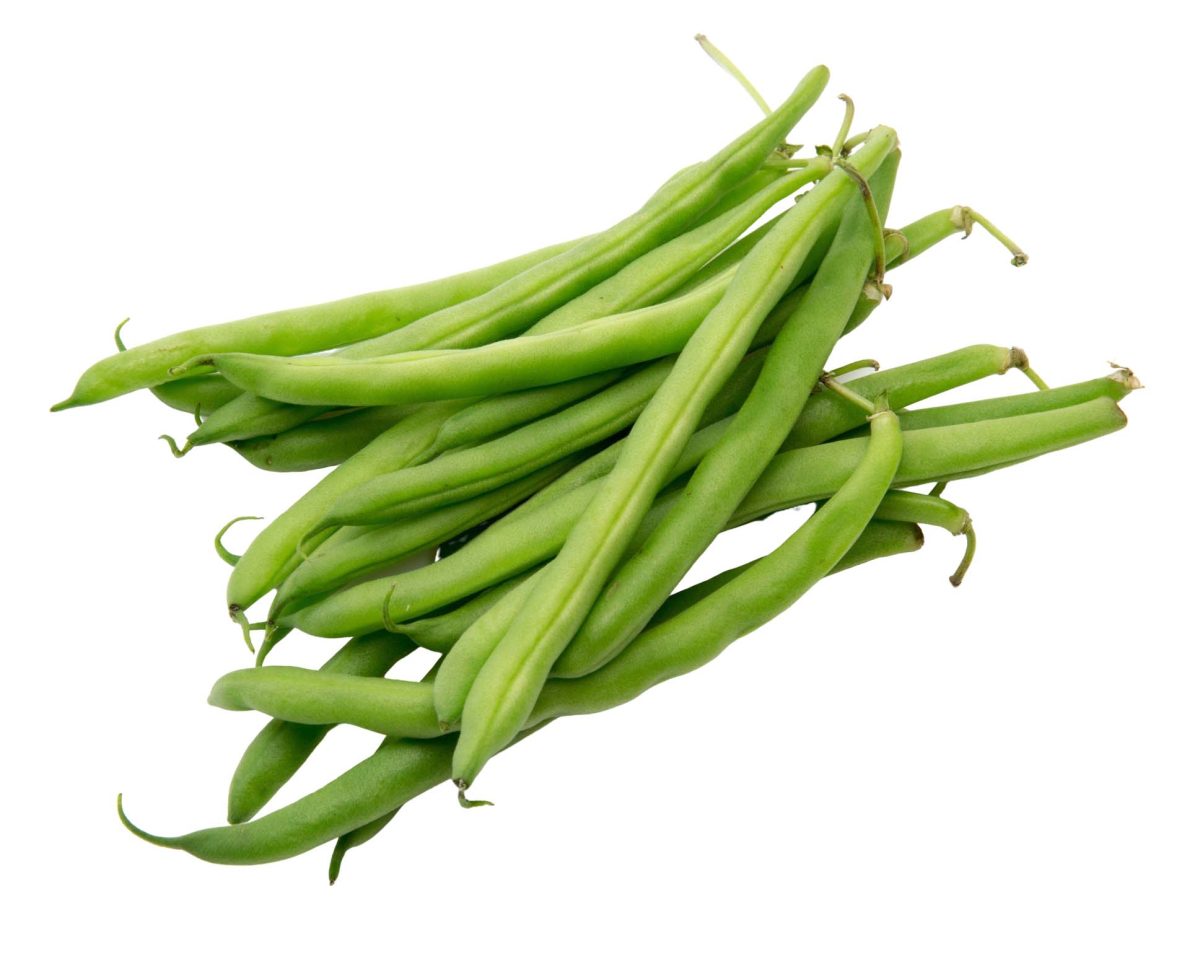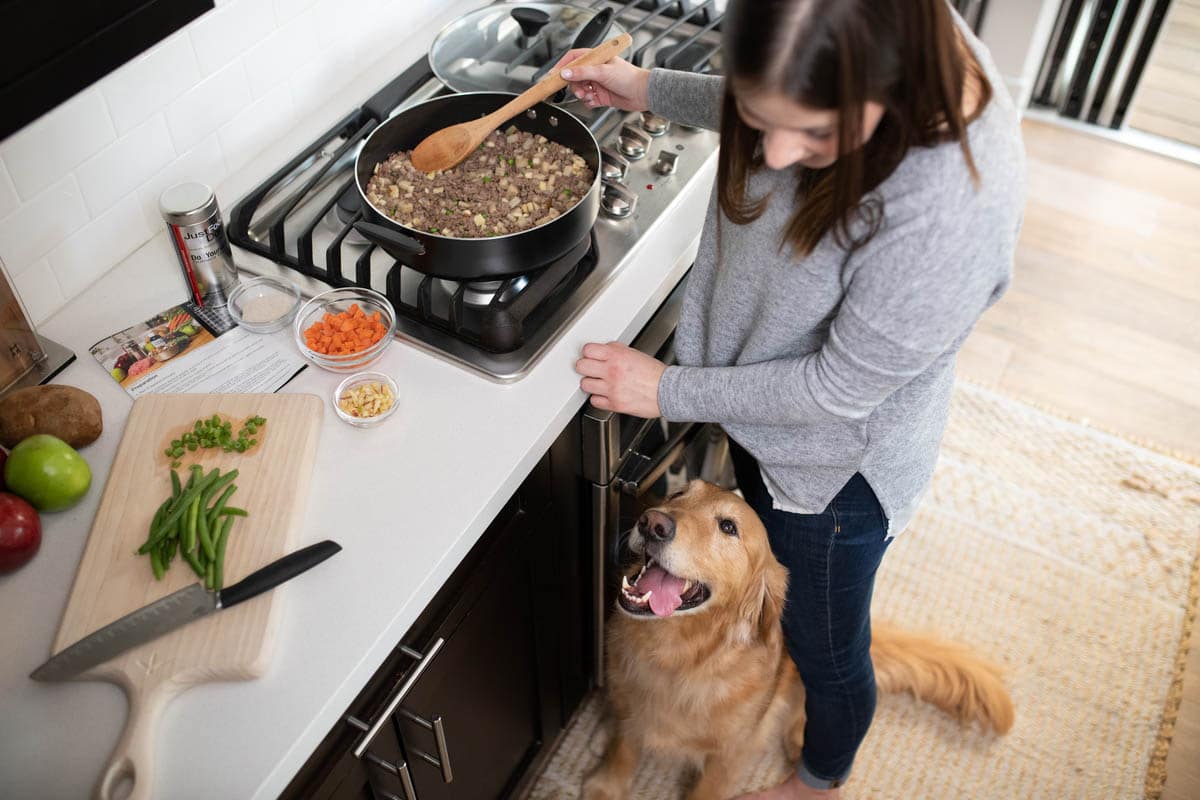Reconstituted Meat in ‘Fresh’ Dog Food
Learn all about reconstituted meat in dog food, how it’s made, why it’s used, and potential risks so you can decide if it deserves a place in your dog’s bowl.
It’s no secret that our furry friends deserve the best. We scour the internet, scrutinize ingredients, and prioritize dog food that promises vitality and health. But what if, lurking beneath the “farm-raised chicken” and “beef stew flavor” claims, lies a less savory truth?
In this post, you’ll learn all about reconstituted meat products in dog food, how it’s made, why it’s used, and potential risks so you can decide if it deserves a place in your dog’s bowl.
What is reconstituted meat?
Reconstituted meat is known by many names, including formed meat, pink slime, emulsified meat, and—arguably the most stomach-churning—“meat slurry.” It’s exactly what it sounds like: a mystery meat smoothie.
Leftover meat scraps, trimmings, and even skin are finely ground, mixed with water, and then rigorously processed to remove fat and pigment. The result? A pale, malleable paste that can be molded, seasoned, and shaped into nuggets, hot dogs, sausages, and even pet food.
Reconstituted meat offers several advantages to food manufacturers. It’s cheaper than whole muscle cuts, reduces waste, and allows for consistent texture and flavor. The thing is, it can also be used to create “white meat” products from red meat, like chicken nuggets.
One of the other issues with reconstituted meat is that it has had its nutritional value diluted with carcinogenic emulsifiers like carrageenan and stabilizers like salt and potassium chloride.
In the video below, you can watch a fast food meat milkshake in action.
Carrageenan and reconstituted meat
One of the primary emulsifiers used to reconstitute meat is carrageenan. Carrageenan is a product of Irish moss, which is an edible red seaweed. It is used as a thickener or gelling agent in human food and moist pet food. It’s also in many other products for humans, like shampoo and gel air fresheners.
So, what’s the problem with carrageenan in reconstituted meat? It’s a known potential carcinogen that may increase the risk of cancer. It has also been found to cause problems like IBD and colitis.
Despite recent scientific literature describing the potential harm to pets, carrageenan is classified by the U.S. Food and Drug Administration as GRAS, or “generally recognized as safe.”
Related reading: Controversy Over Carrageenan in Dog Food
Reconstituted meat in fresh dog food
Yes, meat slurry is used in refrigerated dog food marketed as “fresh.” Read the ingredient labels closely, as many include carrageenan in their diets. Carrageenan is a thickener added to the meat ‘milkshake’ to form it into unnatural-looking pale balls and meat loaves.
It’s manufacturing processes like these that “dilute down the nutritional significance of the required elements bodies need to thrive,” says Amanda Decker, the Director of Food Science at JustFoodForDogs.
In other words, brands that use highly processed, reconstituted meat with preservatives give pet parents the impression it can meet the same nutritional value that whole food ingredients can offer, but at what additional cost to your pet’s health? The negative effects of the added processing agents are certainly not advertised.
At Just Food For Dogs, we found the balance to best deliver life-enhancing diets the way they were intended by embracing nature’s way of preservation: freezing, refrigerating, and encasing (packaging). We use meat approved by the USDA for human consumption—the same stuff you find at the grocery store—to take advantage of all the nutrients it has to offer in its more natural state. We never have and never will use reconstituted meat or carrageenan in our fresh whole food diets.
Navigating the world of “fresh” dog food
So, should you avoid dog food products that use additives, reconstituted meat, and carrageenan? That’s up to you. If you’re a stickler for knowing exactly what’s in your dog’s bowl, reconstituted meat might be a turn-off. But for many, it’s simply an invisible ingredient.
Here are some tips to navigate the reconstituted meat maze:
- Read labels carefully. Look for terms like “mechanically separated meat,” “formed meat,” and of course, carrageenan.
- Support brands committed to transparency. Many companies are proud to use unprocessed meat without preservatives or fillers in their dog food. They should be open to providing answers to pet parents about the human-grade nature (or lack thereof) of their products.
- Talk to a board-certified veterinary nutritionist. A veterinary professional can help guide you to find the best diet for your dog and its individual needs that uses high-quality ingredients.
Ultimately, reconstituted meat is a reality of the modern advancements in the food industry. Whether you embrace the processed meat goo or avoid it, knowledge is power. Next time you see a bag of seemingly “fresh” dog food at the grocery store, you may want to give it a closer look.
This content is for informational use only and does not replace professional nutrition and/or medical advice, diagnosis, or treatment. It is not a substitute for specific nutrition and/or medical recommendations. Please talk with your veterinarian about any questions or concerns.








